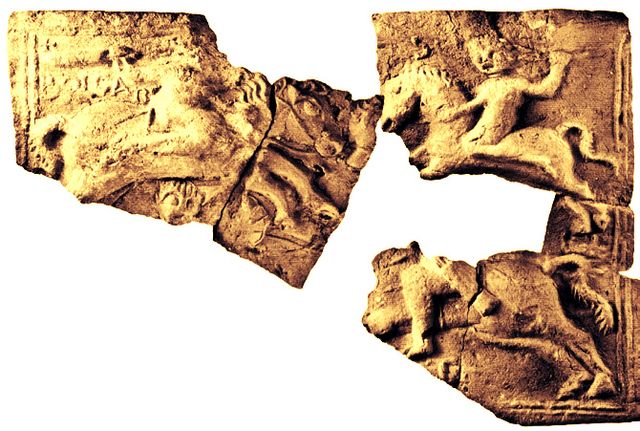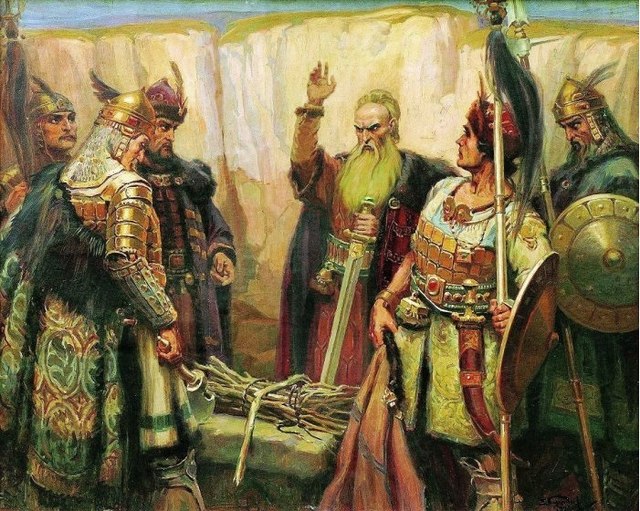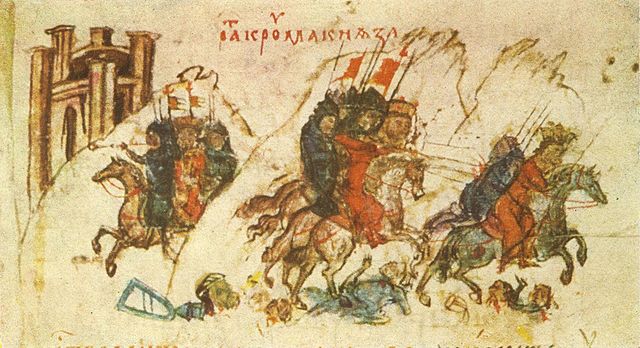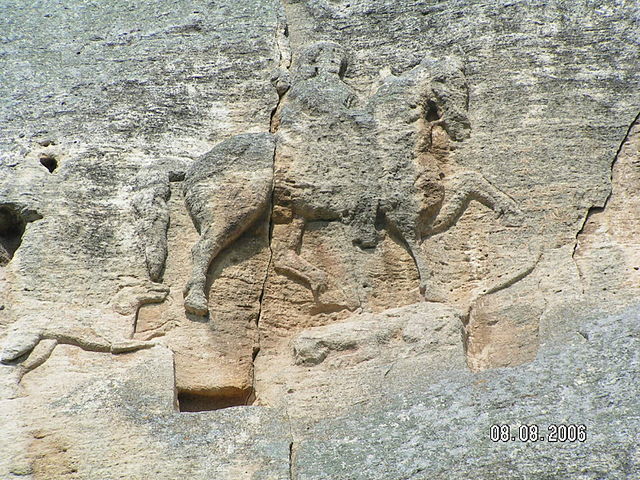Kuber was a Bulgar leader who, according to the Miracles of Saint Demetrius, liberated a mixed Bulgar and Byzantine Christian population in the 670s, whose ancestors had been transferred from the Eastern Roman Empire to the Syrmia region in Pannonia by the Avars 60 years earlier. According to a scholarly theory, he was a son of Kubrat, brother of Khan Asparukh and member of the Dulo clan.
Terracotta tile with the Latin inscription "BOLGAR" and "SCLAVIGI" found in Vinica, North Macedonia, which according to some interpretations depicts a battle scene from the late 7th century between Kuber's Bulgars and Slavs.
Seal of Mauros, one of Kuber's chief associates, from 684–685 AD. The inscription says: "Of Mauros, patrikios and archon of the Sermesianoi and Bulgaroi".
Image: Bolgari sclavi teracota Vinitza FYROM
The Bulgars were Turkic semi-nomadic warrior tribes that flourished in the Pontic–Caspian steppe and the Volga region during the 5th-7th century. They became known as nomadic equestrians in the Volga-Ural region, but some researchers believe that their ethnic roots can be traced to Central Asia.
Bulgars led by Khan Krum pursue the Byzantines at the Battle of Versinikia (813)
A 1926 painting depicting Kubrat (in center), ruler of Great Bulgaria.
Khan Krum defeats the Byzantine Emperor Nicephorus I in the battle of the Varbitsa Pass, Manasses Chronicle
The Madara Rider, an example of Bulgar art in Bulgaria, dated to the beginning of the 8th century






